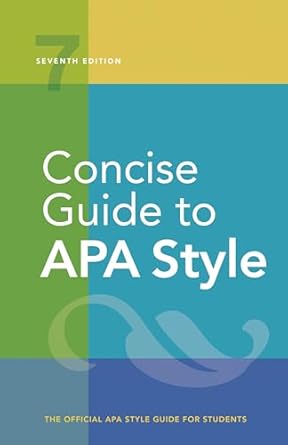[toc]
apa intext citations a guide
Concise Guide to APA Style: 7th Edition (OFFICIAL)
Page 205 Review
Understanding In-Text Citations: A Deep Dive into APA Style
The American Psychological Association (APA) style provides a comprehensive framework for academic writing, ensuring clarity, consistency, and proper attribution of sources.
One of the core components of APA style is the in-text citation, which serves as a brief identifier within the body of the paper, linking back to a more detailed entry in the reference list.
This commentary will explore the intricacies of in-text citations, particularly focusing on personal communications and the author-date system.
Personal Communications: A Unique Case
APA style addresses the citation of various source types, including those that are not readily accessible to the general public.
Among these are personal communications, which encompass a range of interactions such as “online chats or direct messages, personal interviews, telephone conversations, live speeches, unrecorded classroom lectures, memos, letters, messages from nonarchived discussion groups or online bulletin boards, and so on.” Because these sources are not typically recoverable, they are treated differently from published works.
The manual emphasizes that “[u]se a personal communication citation only when a recoverable source is not available.” This means that if the information obtained from a lecture, for instance, is also available in a published article, the published source should be cited instead.
However, if the lecture contains original, unpublished content, then citing it as a personal communication is appropriate.
It is also crucial to distinguish personal communications from data gathered through original research: “Do not use a personal communication citation for quotes or information from participants whom you interviewed as part of your own original research.” This distinction highlights that information collected directly from research participants is considered primary data and should be handled differently, typically described within the methodology section of the paper.
Formatting Personal Communication Citations
Due to the unrecoverable nature of personal communications, they are not included in the reference list.
Instead, they are cited directly within the text.
The format involves providing the initial(s) and surname of the communicator, along with the most precise date possible.
Examples provided include:
- Narrative citation: “E.-M.
Paradis (personal communication, August 8, 2019)”
- Parenthetical citation: “(T.
Nguyen, personal communication, May 24, 2020)”
These examples demonstrate the concise and informative nature of personal communication citations within the text.
The Author-Date Citation System: A Foundation of APA Style
The cornerstone of APA’s in-text citation methodology is the author-date system.
As the manual states, “[u]se the author-date citation system to cite references in the text in APA Style.
In this system, each work used in a paper has two parts: an in-text citation and a corresponding reference list entry.” This system ensures a clear connection between the ideas presented in the paper and the sources from which they originate.
The in-text citation serves as a brief marker, containing the author’s surname and the publication year.
This allows readers to quickly identify the source and locate the full reference entry at the end of the paper.
The relationship between the in-text citation and the reference list entry is crucial for maintaining academic integrity and allowing readers to verify the information presented. “The in-text citation appears within the body of the paper (or ina table, figure, footnote, or appendix) and briefly identifies the cited work by its author and date of publication.
This in-text citation enables readers to locate the corresponding entry in the alphabet- ical reference list at the end of the paper.”
Furthermore, the guide specifies that “[i]n an in-text citation, provide the surname(s) of the author(s) or the name(s) of the group author(s).
Do not include suffixes such as “Jr. in the in-text citation.” This instruction ensures that citations remain concise and focused on the core identifying information of the author.
Conclusion
Mastering in-text citations, including the nuances of personal communications and the author-date system, is essential for producing credible and well-supported academic work in APA style.
By adhering to these guidelines, researchers and writers can effectively acknowledge their sources, enhance the clarity of their arguments, and contribute to the scholarly community.
Buy full ebook for only $18: https://www.lulu.com/shop/american-psychological-association/concise-guide-to-apa-style-7th-edition-official/ebook/product-rmzpq54.html?page=1&pageSize=4

